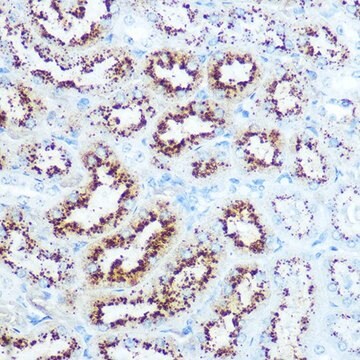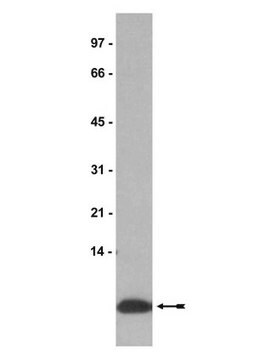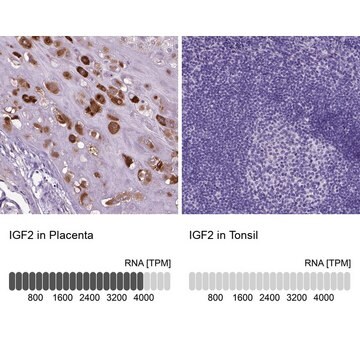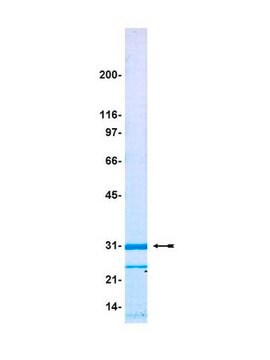05-172
Anti-IGF-I Antibody, clone Sm1.2
clone Sm1.2, Upstate®, from mouse
Synonyme(s) :
Mechano growth factor, insulin-like growth factor 1, insulin-like growth factor 1 (somatomedin C), somatomedin C
About This Item
Produits recommandés
Source biologique
mouse
Niveau de qualité
Forme d'anticorps
purified immunoglobulin
Clone
Sm1.2, monoclonal
Espèces réactives
avian, chicken, mouse, rat, human
Fabricant/nom de marque
Upstate®
Technique(s)
immunohistochemistry: suitable
immunoprecipitation (IP): suitable
neutralization: suitable
western blot: suitable
Isotype
IgG1κ
Numéro d'accès NCBI
Numéro d'accès UniProt
Conditions d'expédition
dry ice
Modification post-traductionnelle de la cible
unmodified
Informations sur le gène
human ... IGF1(3479)
Description générale
IGF-1 is produced primarily by the liver as an endocrine hormone and targets tissues in a paracrine/autocrine fashion. Production is stimulated by growth hormone and can be retarded by undernutrition, growth hormone insensitivity, lack of growth hormone receptors, or failures of the downstream signaling pathway post GH receptor including SHP2 and STAT5b. Approximately 98% of IGF-1 is always bound to one of 6 binding proteins (IGF-BP). IGFBP-3, the most abundant protein, accounts for 80% of all IGF binding. IGF-1 binds to IGFBP-3 in a 1:1 molar ratio. Its primary action is mediated by binding to specific IGF receptors present on many cell types in many tissues. The signal is transduced by intracellular events. IGF-1 is one of the most potent natural activators of the AKT signaling pathway, a stimulator of cell growth and multiplication and a potent inhibitor of programmed cell death.
Spécificité
Immunogène
Application
5 μg of a previous lot immunoprecipitated 100 ng of IGF-I.
Immunohistochemistry:
10 μg/mL of a previous lot was reported by an independent laboratory to detect IFG-I in formalin-fixed, paraffin-embedded skin sections.
(Lui, 1994).
Neutralization:
10-20 μg/mL of a previous lot inhibited the activity of 10 ng/mL of IGF-I as determined by testing with chicken embryo fibroblasts (CEF) using an ATP endpoint assay (ATPLiteTM-M, Packard Instruments).
Signaling
Insulin/Energy Signaling
Qualité
Western Blot Analysis:
0.5-2 μg/mL of this antibody detected 100 ng of IGF-I (Catalog # 01-208) under non-reducing conditions.
Description de la cible
Forme physique
Stockage et stabilité
Remarque sur l'analyse
MCF-7 cell extracts
Autres remarques
Informations légales
Clause de non-responsabilité
Code de la classe de stockage
11 - Combustible Solids
Classe de danger pour l'eau (WGK)
WGK 1
Certificats d'analyse (COA)
Recherchez un Certificats d'analyse (COA) en saisissant le numéro de lot du produit. Les numéros de lot figurent sur l'étiquette du produit après les mots "Lot" ou "Batch".
Déjà en possession de ce produit ?
Retrouvez la documentation relative aux produits que vous avez récemment achetés dans la Bibliothèque de documents.
Notre équipe de scientifiques dispose d'une expérience dans tous les secteurs de la recherche, notamment en sciences de la vie, science des matériaux, synthèse chimique, chromatographie, analyse et dans de nombreux autres domaines..
Contacter notre Service technique








